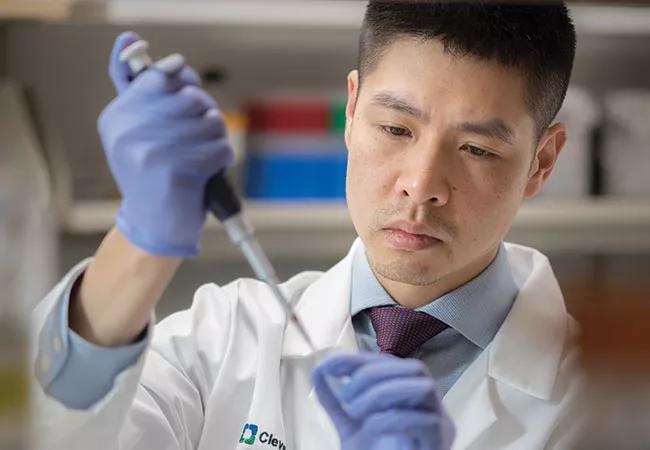Targeted discharge intervention demonstrates success

In a recent Cleveland Clinic-led study, a team of urologists examined the impact of a more targeted enhanced recovery intervention on patients following a radical cystectomy. They published their findings in Urology.
Advertisement
Cleveland Clinic is a non-profit academic medical center. Advertising on our site helps support our mission. We do not endorse non-Cleveland Clinic products or services. Policy
Radical cystectomy is the mainstay of treatment for patients with muscle-invasive bladder cancer. After removing the entire bladder, nearby lymph nodes, and often adjacent urinary and/or reproductive organs as indicated, the surgeon reconstructs the urinary tract. It is among the most complex and costly urologic surgeries and is often associated with extended hospital stays and high rates of readmission.
Many centers performing radical cystectomy have implemented an evidence-based perioperative Enhanced Recovery (ER) pathway to improve recovery time for patients. This approach has been well-documented to reduce the hospital length of stay among patients who have undergone major abdominal surgery involving the bowels. Among other characteristics, the protocol includes the following key components: elimination of preoperative bowel prep, perioperative alvimopan, minimized opioid use, and early ambulation and diet postoperatively.
However, despite the clinical utility of the intervention, hospital readmissions continue to be high for patients undergoing radical cystectomy, prompting providers to explore novel therapeutic options to reduce readmission. “This is a significant unmet clinical need,” comments Byron Lee, MD, PhD, a urologic oncologist and researcher at Cleveland Clinic and senior author of the study. “Hospital readmissions increase patient morbidity and elevate the potential for significant financial burdens on both the patient and the healthcare system.”
The study utilized a prospectively maintained patient registry to examine bladder cancer patients (N = 320) who underwent radical cystectomy with urinary diversion at Cleveland Clinic between January 2016 and October 2018. Because this was prior to the adoption of the traditional ER program, one cohort (N = 111) was excluded from the ER protocol, while another cohort (N = 209) received it.
Advertisement
Findings showed that the patients who received the ER intervention experienced a median decrease in length of stay from 8.0 (6.0-11.0) days to 5.0 (4.0-7.0) days. Major complications and hospital readmission rates among the two cohorts were clinically insignificant. However, a third cohort (N = 51) received an ER plus (ER+) protocol, which includes all of the characteristic ER components with the addition of an outpatient follow-up visit within one week of discharge and an infusion of 1 liter of saline at surgeon discretion. Patients in this cohort had a significantly lower readmission rate (5.9%) than the conventional ER pathway (20.3%, P = .017).
“Overall, this study further validates the utility of the traditional ER pathway in decreasing the length of stay for patients undergoing radical cystectomy. Simultaneously, it also highlights the need for early evaluation after discharge and a specific intervention that targets a reduction in hospital readmission for patients who need it. We have shown that ER+ implementation resulted in a substantial benefit with the lowest reported readmission rate following radical cystectomy to date,” says Dr. Lee.
The authors note that the ER+ intervention, characterized by follow-up at one-week post-discharge and the addition of IV hydration, is highly effective at reducing one of the most common causes of readmission: dehydration and failure to thrive. Although ER+ also eliminated readmissions due to other causes in this study, it is not a panacea for all the clinical problems that may lead to readmission.
Advertisement
Still, the results are promising and signify an opportunity to decrease readmissions rates, eliminate costs and improve overall patient satisfaction, all of which have posed challenges within the bladder cancer field. Complementing these research efforts, the team continues to explore distance health opportunities to monitor a patients’ fluid and food intake post-discharge to allow for more careful outpatient management.
“Ultimately, we are hopeful that these findings set the stage for our group — and for others — to expand existing ER protocols, which have already demonstrated positive outcomes in length of stay metrics,” says Dr. Lee. “There is an opportunity to build on this foundation and move beyond the traditional model, which we intend to it. We are committed to continuous improvement in our care for bladder cancer patients.”
Advertisement
Advertisement

Pediatric urologists lead quality improvement initiative, author systemwide guideline

Fixed-dose single-pill combinations and future therapies

Reproductive urologists publish a contemporary review to guide practice

Two recent cases show favorable pain and cosmesis outcomes

Meta-analysis assesses outcomes in adolescent age vs. mid-adulthood

Proteinuria reduction remains the most important treatment target.

IgA nephropathy is a relatively common autoimmune glomerular disease that can be diagnosed only by biopsy

Oncologic and functional outcomes are promising, but selection is key